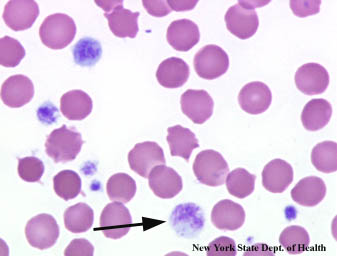Platelet count can be affected by a person's race or environmental conditions. There are different conditions that can cause low platelet counts. Inherited diseases such as Benard Soulier syndrome or May Hegglin anomaly can cause low platelet counts resulting in heavy bleeding in even small skin lesions. Some people have low platelet count because their body does not produce enough platelets naturally. This can be due to some types of cancer (such as bone marrow cancers,) alcoholism, viral infections, inherited disorders, vitamin B12 deficiency, folic acid deficiency, osteoporosis or myelofibrosis.
Some people acquire thrombocytopenia through platelets being killed off faster than they can be replenished. This can be caused by HIV infection, taking quinine for the treatment or prevention of malaria, an autoimmune disease or certain types of cancer. Sometimes the platelets are used at inappropriate times causing a shortage. This can be caused by meningitis infection, constant high blood pressure, certain types of cancer, and some blood disorders.
Some people have abnormally large spleens which can cause thrombocytopenia. Thrombocytopenia is diagnosed through a blood test that is analysed in a laboratory. The platelet count within the blood determines the diagnoses. If a patient is found to have low platelets, the doctor will have other tests in order to determine why the patient has a low platelet count. If the condition can be treated and is treated properly, the platelet count can be improved. Most people have a low platelet count due to a vitamin B12 or folic acid deficiency or because of a viral infection.
